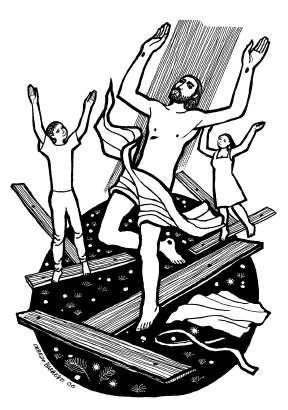#Pascua de Resurrección
Text

"Where flowers bloom, so does hope."
~Lady Bird Johnson
#her penetrating soul#eggs#easter photography#colored#colorful eggs#colored eggs#easter eggs#happy easter#Pascua de Resurrección#chocolate#good friday#flowers#daisies#soulful#soulful beauty#soulful love#soulful expressions#soulful sentiments#soulful moments
112 notes
·
View notes
Text


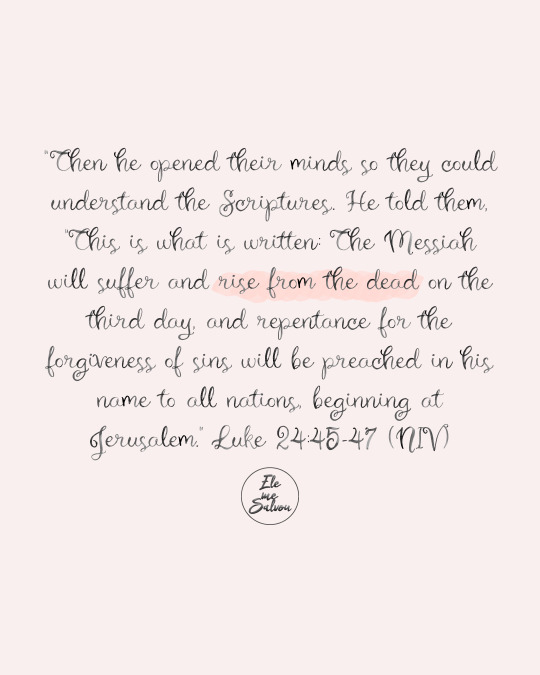
Feliz Páscoa!
Happy Easter!
¡Feliz Pascua!
#EleMeSalvou#God#faith#bible#bibleverse#biblestudy#biblia#bíblia#truth#scripture#frases#verses#versículos#christian#christianity#Páscoa#Easter#Pascua de Resurrección#Kings#Luke#Lucas#passover#He saved Me#Jesus Saved me#cristianismo
22 notes
·
View notes
Text




09 • Abril • 2023
FELIZ PASCUA DE RESURRECCIÓN!!!!!!
Celebrando está hermosa fecha, todos nos pusimos a jugar con acertijos, pistas y juegos para encontrar los huevitos jsjs
Nos divertimos demasiado y ahora ya en casa celebro con heladito y unos alfajores ♡
La primera foto es el botín del chocolate que nos dieron a mamá y a mí ♡♡♡♡♡
1 note
·
View note
Text
My aunt was born on Easter Sunday
Below is the baptismal certificate (in Spanish) of my dear Aunt Nam.
Aunt Nam was my father’s elder sister. She was also my first teacher who taught me how to read, write, and pray.
The last time Easter Sunday fell on April 9 was in 1950. It was on that same date and year when Aunt Nam was born. And that is why my grandparents gave her the name Ester Resurrección Alas y Évora vda. de Balicao…
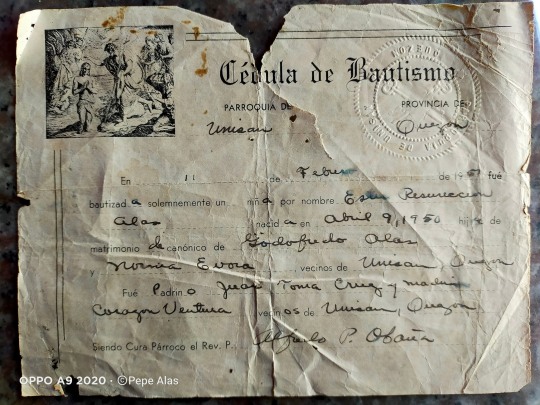
View On WordPress
0 notes
Text

❤️❤️❤️ RESUCITÓ ❤️❤️❤️
#mendezilustracion#domingo de resurrección#felices pascuas#vivacristorey#viva cristo rey#cristorey#christianlivesmatter#catolico#semanasanta#semana santa#cuaresma#lacruzprevalece#lacruznosetoca#catolicos#catolicismo#catolicchurch
2 notes
·
View notes
Text
La gran noticia
#Tiberíades #Mehashabladoenmilcanciones
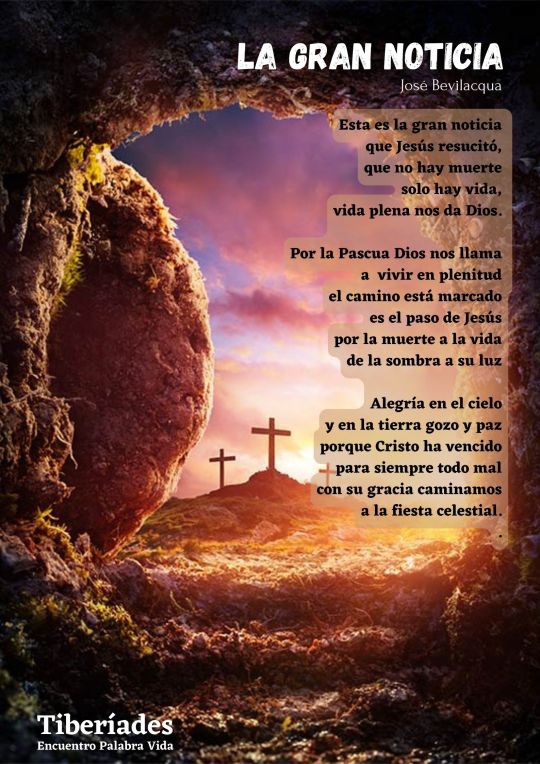
View On WordPress
#buena noticia#Jesús#Jesús de Nazaret#Jesucristo#José Bevilacqua#música católica#Pascua#resurrección
0 notes
Text
Feliz Pascua de Resurrección !

View On WordPress
0 notes
Text
Episodio 24
Subscribe to continue reading
Subscribe to get access to the rest of this post and other subscriber-only content.
Type your email…
Subscribe
Already a subscriber?

View On WordPress
1 note
·
View note
Text
La señal de Jonás - Iglesia Online
Encuentro de adoración y predicación del Movimiento La Red, una Iglesia Online, con una meditación titulada «La señal de Jonás», basada en el libro del profeta Jonás y en Lucas 11.29-32.
¿Qué es “la señal de Jonás”? ¿Cómo podemos definirla? ¿Cuál es la relación entre la historia del profeta Jonás y el relato de la resurrección de Jesús de Nazaret? En este sermón, predicado originalmente en la…

View On WordPress
#Domingo de Pascua de Resurrección#Domingo de Resurrección#drpablojimenez#iglesiaonline#Jonas#la señal de Jonás#lucas11#movimientolared#predica#predicación#prediquemos#profeta Jonás#resurreccion#resurrección#sermon#sermones
1 note
·
View note
Text
El encuentro entre Cristo Resucitado y la Virgen de la Alegría cierra la Pascua alicantina
Miles de personas han asistido este domingo al encuentro entre el Cristo Resucitado y la Virgen de la Alegría en la plaza del ayuntamiento de Alicante, que pone fin a la Semana Santa con el Domingo de Pascua.
Las imágenes de Nuestra Señora de la Alegría y del Cristo Resucitado han partido, en torno a las 11 horas, desde la Basílica de Santa María y la Concatedral de San Nicolás. En la matinal de…

View On WordPress
0 notes
Text
Miles de peregrinos se reúnen en la Plaza de San Pedro para la Misa de Pascua presidida por el Papa Francisco
Más de 45,000 peregrinos llenaron la soleada Plaza de San Pedro la mañana del Domingo de Pascua. Los fieles católicos fueron acompañados por decenas de miles de flores procedentes de los Países Bajos, las cuales adornaron los escalones que conducen a la Basílica del Vaticano y continuaron una tradición anual iniciada en 1985.
El Papa Francisco presidió la Misa en la Solemnidad de la Resurrección…

View On WordPress
#Alegría#cristianos#esperanza#Jesus#Misa#papa Francisco#Pascua#Plaza de San Pedro#Resurrección#tumba
0 notes
Text
Felíz Pascua de Resurrección
SHAVÚA TOV JESÚS ELSEÑOR
1 note
·
View note
Text
For the first time I'm realizing for real that "your" Easter has nothing to do with "our" Semana Santa (Holy Week) (though lasts more than a week).
Like- chocolate, rabbits, hiden eggs, what's that all about? 😂
#easter#semana santa#eostres#pascua#pasión de cristo#holy week#pasos#tronos#procesión#sábado de pasión#domingo de resurrección#saetas
0 notes
Text
Celebrating Christmas in the Philippines: The Christmas Capital of Asia (Part 1)
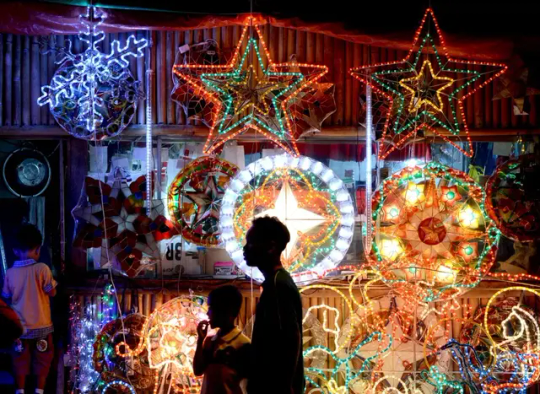
A store in the Philippines that sells Filipino Christmas decorations sourced AFP Photo/Noel Celis, posted by Ana Catalina Paje (2021) via Yahoo! News
Filipino Christmas is notorious worldwide for being some of the longest celebrations of the holiday in the world. Often said to start on the month of September and ending at around February, being the main event for almost half the year is nothing to sneeze at. Even with this, how much do you know about Filipino Christmas exactly?
Just like all Christmas traditions from all around the world, the Filipino way is rooted in long tradition and history that stems from colonial, and postcolonial practices that continue to evolve into the present day with many more additions in the future.
Before I start
As usual, it is important for me to recognize that the Philippines is a diverse country with different cultures, traditions, and histories with each community having their own unique practices and experiences with the holidays. There is no way for me to fully encompass every single experience that every Filipino has for this holiday as well as the experiences of those who don't even celebrate the holiday. This is besides the fact that uncovering sources for more specific traditions or practices may be either difficult or impossible for me to access easily.
I also want to note that not all Filipinos celebrate Christmas such as Filipinos of different religious backgrounds such as Muslim, Hindu, Buddhist Filipinos, or of different denominations that may not celebrate Christmas such as members of some Protestant denominations.
I also had to split up this post into two parts because Tumblr wouldn't let me make extremely long posts. Part 2 is linked here.
With that being said, feel free to add your own stories and experiences to this post if you have any to share or even information that I may not had discussed at all.
(This was supposed to go live on the 25th but it got delays because of personal stuff sowwyyyy. I'll just reblog this for next year too lol)
Etymology
In the Philippines, Christmas is primarily called pasko with the season itself called kapaskuhan . It comes from the Spanish word pascua, from the phrase pascua de navidad. Pascua comes from the Latin pascha which then comes from the Greek πάσχα (páskha) which then came from Hebrew's פסח (pesach) originally referred specifically to Passover (Vivas, 2021).
From pascua and, by extension, pasko's usage to refer to Easter (i.e. pascua de resurrección and pasko ng pagkabuhay respectively), the word was then later used to refer to Christmas (i.e. pascua de navidad) as the word often referred to the celebratory aspect of the holiday. The Spanish brought over the dual usage of the term for both holidays during the colonial period.
Certain variations of the word around the country typically follow the same root with pasku or pascu being used in Kapampangan, a closely related language to Tagalog, and some other languages keeping the usage of pascua like the Spanish creole language of Chavacano.
Filipinos today often interchange the usage of pasko and Christmas when discussing the holiday, and sometimes may use an informal Filipinized spelling of Christmas as krismas by spelling the English word by sound (a trait of a lot of Filipino languages) which mimics a Filipino accent but I honestly had not seen this in a while.
History
Surprisingly,according to legend, the story of Christmas in the Philippines doesn't start on 1521, the year Ferdinand Magellan landed on the island of Cebu, nor the subsequent years after that, but on 1324, nearly 200 years before the Spanish came anywhere close to the Philippines islands.
In an old church called Saint James the Great Parish Church found in Bolinao, Pangasinan, exists a marker that makes the interesting claim that the first mass, and by extension the first mass in the history of the Philippines took place in the very place where the church now stood as a thanksgiving mass for their safe landing on the island (Sotelo, 2015). Ocampo (2012) states that there had been claims within Pangasinan folk legends that this first mass was also specifically the first Christmas mass that had taken place in the history of the Philippines which had embedded itself on the town of Bolinao's folklore.
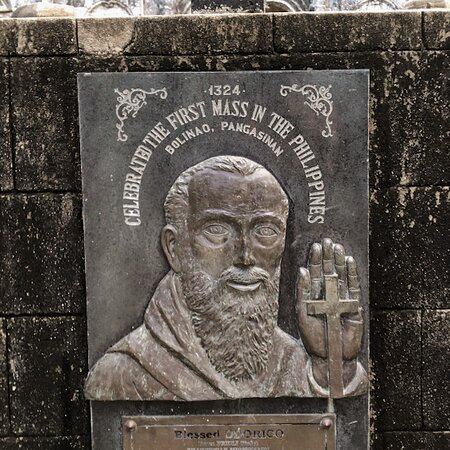
A photo of the plaque found in St. James the Great Parish, Bolinao, Pangasinan showing Fr. Odorico posted by Vera Bajado (2021) via TripAdvisor
The story goes that on a stormy night, during his missionary travels to Asia, Italian Franciscan friar and missionary Blessed Fr. Odorico of Pordenone landed on the islands to take refuge in the town to wait for the rains to pass. It is said that they had met "hostile natives" who later changed their disposition after he proved himself harmless. He later celebrated the mass with his crew and the locals, people attributing these events to have taken place on the 25th of December (Yuvallos, n.d.). The full text for the marker that relays this story was transcribed by the blog Vagabonding with Chu (2017) and reads:
"Blessed Odorico
From Friuli (Italy)
Franciscan Missionary
Born in Pordenone (Italy) around 1275 A.D. – Father Odorico, a courageous and religious Franciscan missionary pioneered the spread of the Gospel in Asia and China. He traveled always barefooted among indescribable difficulties and dangers exhausting his energies in the service of the Kingdom of God.
In 1324, after landing and taking refuge in Bolinao, Pangasinan during a stormy weather, Father Odorico celebrated a thanksgiving Mass in honor of their safe journey and his mission. He also indocrinated and baptized many of the Malay immigrants in Bolinao. He returned home to Udine (Friuli) Italy after thirteen years mission. He died a holy death on January 14, 1331. His precious remains are kept in an artistic tomb of the parish church of our Lady of Mount Carmel, in Udine (Italy).
Blessed Odorico, Pray for Us."
- Marker in front of St. James the Great Parish Church
This claim is contested by historians including Ocampo (2012) who even adds that the additional parts of the story makes it much more unbelievable such as the claim that Fr. Odorico also planted the first Christmas tree which had not been a popular Christmas staple until the 19th Century. The National Historical Commission of the Philippines later affirms that the first mass did not in fact take place on Bolinao, Pangasinan but on Limasawa, Southern Leyte on Easter Sunday 1521 (Yumol, 2020).
The first Christmas mass most likely happened either a little after this time with a celebration possibly taking place during the stay of Miguel Lopez de Legaspi when arrived in the Philippines in an effort to start colonizing the islands. He was able to establish a Spanish settlement called the Villa del Santisimo Nombre de Jesús where he and his men lived in from 1565 - 1569 where celebrations for Christmas definitely must have taken place. The last of the Spanish forces in the country had also, incidentally, left from Cebu on Christmas day 1898 (The Freeman, 2021).

An old map of Villa del Santisimo Nombre de Jesús, now modern day Cebu posted by the Basilica Minore del Sto. Niño de Cebu (2017).
A lot of older traditions persist to the present day but the more modern-looking Christmas, much like in other Western Christian countries didn't become as popular until the late 19th to early 20th Century coming mostly from other European and American influences.
Traditions such as the Christmas tree had not existed in Filipino Christmas celebrations until the late 19th century, with the first seen mentions of it in the writings of Dr. José Rizal both in his translation of Hans Christian Andersen's work as well as a letter he had wrote home from Berlin to his sister Saturnina, who was called Neneng, and her husband Manuel, who was called Maneng, where he translates a story about a sad pine tree with the words"Ang Puno ng Pino" (en. The Pine Tree) next to two drawings of Christmas trees, Ocampo (2012) writes.
Ocampo continues to explain how Rizal wrote about the many German traditions that he had encountered in Berlin, including the decorating of a pine tree for Christmas. Ocampo later transcribes this letter in his article:
"There are some beautiful and good [German] customs, like Christmas, which gives me pleasure to describe here for it is not found in Spain and you have not read about it in Spanish books. On Christmas Eve they bring from the forest a pine tree, and this tree is chosen because, besides being erect, it is the only tree that keeps its leaves during winter—I say it badly; not really leaves, but a kind of needle. It is decorated with tinsel, paper, lights, dolls, candy, fruits, dainties, etc., and at night time, it is shown to the children (who should see the preparation of it), and around this tree the family celebrates Christmas."
- Dr. José Rizal in a letter to his sister Saturnina Rizal and her husband Manuel Hidalgo (Ocampo, 2012)
The Christmas tree, however, didn't become fashionable for the wider public's own Christmas celebrations until the arrival of the Americans, of which brought their own American traditions to the Philippines.
Ocampo continues to write that Rizal compared the customs of Germans and the Spanish and said that the Spanish holiday gets ruined because of too much praying. Rizal states that the Germans and those of Northern Europe, celebrate with the idea of preserving some level of childhood innocence and allow children to play unlike the Spanish which he describes as a much more crass culture who don't allow much play for the season and instead make these children pray during the holiday. Ocampo continues to transcribe:
"... the Spaniards do not indulge in poems for children and young people, or as the vulgar expression goes, they do not beat around the bush. They attend more to the positive, or the stomach. And Carambas! they would say; let us amuse ourselves and let children and young people seek their own amusement as best they can. They do seek their own diversion, with the result that the children and young people in Spain lack the charming innocence and candor of those in the North [of Europe], without malice, without great preoccupations (...) This is because here [in Germany] they know how to give age its due, unlike in other countries where children are not allowed to be themselves, to make noise or to play. Instead, they are made to recite the rosary and novena until the poor youngsters become very sleepy and understand nothing of what is going on (...)"
- Dr. José Rizal comparing German and Spanish Christmas customs in his letter to his sister Saturnina and her husband Manuel (Ocampo, 2012).
This aligns with the shift in most Western Christian societies from viewing children (mostly white children) as sinful or ignorant smaller adults to a more romanticized ideal of innocence, allowing children more time for play with less responsibilities that wasn't afforded to them in the previous centuries. The romanticized view of childhood shifted the focus of Christmas on prayer and generosity to be more family, and more specifically, child-centered (Cecire, 2020). This was especially true for more industrialized countries of the time including late 19th Century Germany, of which Rizal was living in during the time he sent that letter to his sister and brother-in-law.

Photograph of the "exhibition of Christmas trees"; at Maryknoll Normal College which features students from the 1930s showing off their Christmas trees that they had created during an art class with Sr. Caritas in the center and art teacher Miss Cristobal at the left-side of the photo at the back. The image was sourced from the University of Southern California Libraries' International Mission Photography Archive, ca.1860-ca.1960, Maryknoll Mission Archives posted by John Tewell (2016) via Flickr.
Filipino Christmas continued to be influenced by non-Hispanic Western Christian countries with the turn of the century and the start of the American colonial era. Traditions like greeting cards which the Americans introduced popularized the figure of Santa Claus and white snow as strong associations with the holiday despite the Philippines never experiencing any snow in its entire history (Roa, 2017).
After the American occupation, Filipino Christmas continued to develop into the modern day adding new traditions stemming from older ones, continuing to change and grow even today.
(Part 2: Practices in the Present Day)
(Reference List)
#mayaposts#mayapino#filipino#philippines#filipino culture#christmas#filipino christmas#history#filipino history#christianity#christian history#traditions#christmas traditions#filipino christmas traditions#colonial history#spanish colonial history#american colonial history#long post
6 notes
·
View notes
